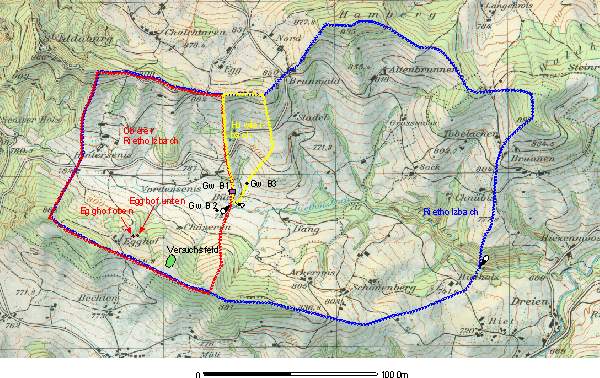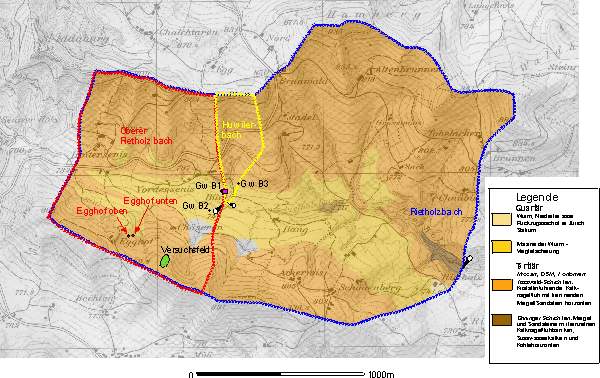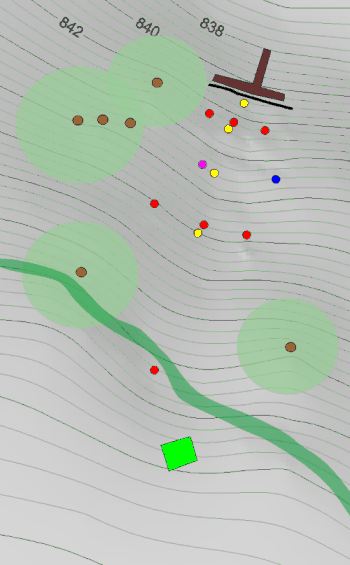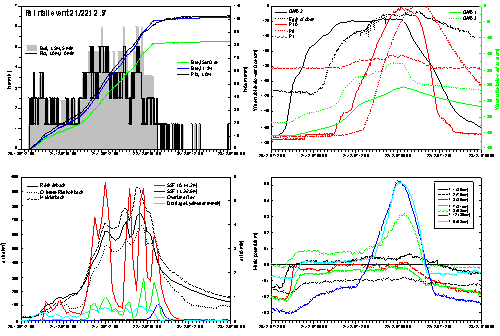Homepage Markus Weiler
|
|
|
|
|
|
|
|
|
|
|
|
|
|
|
|
|
|

|
|
|
The Rietholzbach catchment |
||||||
|
site |
The Rietholzbach Catchment is a small headwater catchment (3.18 km2) in
north-east Switzerland (47°23'N, 9°00'E). The land-use of the catchment is 80% agriculture (meadow) and 20% forest.
The catchment has been intensively studied since the mid 70s.
The Hydrology Section of the Institute for Climate Reasearch
at the ETHZ looks after the instrumentation and measurements. |
|||||
|
geology |
The bedrock geology of the catchments mainly consits of sediments of the "Obere Suesswassermolasse" (tertiary).
This sediments ("Toesswald Schichten") are conglomerates of calcic and igneous rocks combined with
sandy and muddy layers. In the valley moraines from the quartary lay over the sedimentary rocks.
|
|||||
|
hillslope |
Lateral flow in the soil seems to be an important contribution to runoff.
Experiments at the hillslope scale with the larger sprinkling system are planed.
Lateral flow velocities, the contribution area and the extent of interconnection
between vertical and lateral flow paths will be investigated.
|
|||||
|
flood |
A heavy rainfall event occured in December, 21st, 1997. The rainfall amount exceeded 100 mm during 1.5 days.
The reaction of the experimental plot to the event correlates well with the discharge in the three sub-catchments
of the Rietholzbach catchment. The dominating flow component was the upper subsurface flow, however, the deep subsurface flow
increased after the plot was partially saturated. The antecedent soil moisture conditions were wet (matrix potential between 0 to -30 cm) |
|||||
|
|



